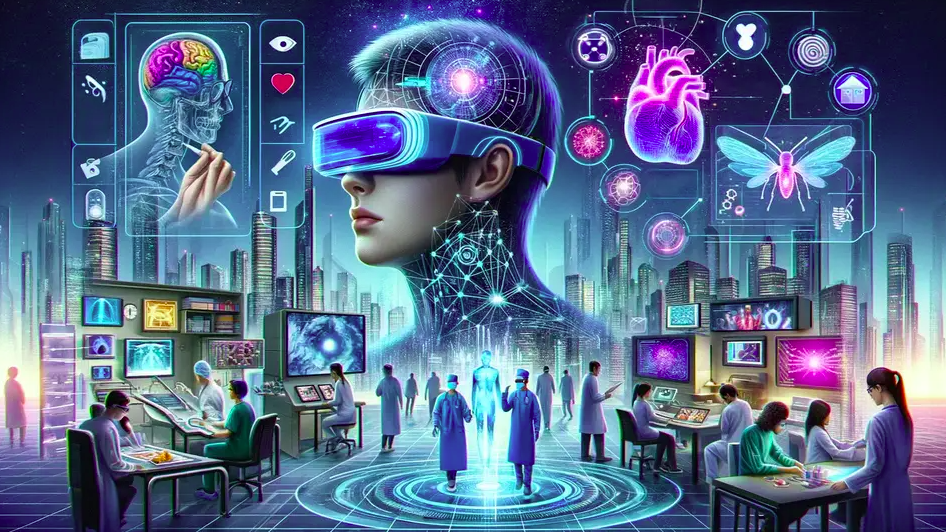While AR glasses promise to enrich our visual experience with digital overlays, major players like Google and Microsoft have struggled to produce lightweight, headache-free headsets. However, a recent breakthrough, integrating 3D holograms, AI, and advanced physics akin to invisibility cloaks, has birthed a comfortable, full-color 3D AR display akin to eyeglasses.
Unlike Virtual Reality (VR) headsets that envelop the user’s field of vision, AR headsets blend digital imagery seamlessly with the real world, offering a mixed reality experience. The potential applications span from remote assistance for household repairs to augmented navigation aids, enriching users’ interaction with their environment.
“We’re venturing into the realm of what holography could achieve—an ultra-thin, lifelike, 3D VR/AR display as thin as conventional eyewear,” remarks Gordon Wetzstein, a faculty member at Stanford University. However, despite the expanding scope of applications, AR’s widespread adoption faces significant barriers. Traditionally, AR displays aimed for the form factor of eyeglasses but relied on complex optics, resulting in discomfort for users.
“Innovations should not compromise comfort. No one desires a bulky headset causing neck strain,” asserts Gordon Wetzstein, an electrical engineering associate professor at Stanford University. Additionally, traditional AR headsets, akin to 3D displays, can induce eye fatigue by presenting different 2D images to each eye.
To overcome these limitations, researchers explored holographic video displays that offer depth without eyestrain. By leveraging optical metasurfaces—microscopic structures engineered to manipulate light—the research team bypassed the need for bulky optics in AR displays. AI played a pivotal role in optimizing metasurface design and calibrating the entire display system, ensuring uniform light scattering and high-quality holograms.
The outcome? A holographic AR display resembling conventional eyeglasses, capable of projecting full-color 3D images. This innovation not only reduces the bulk of existing AR displays but also provides individualized 3D images to each eye, enabling users to focus at varying distances within the digital scene. This addresses common issues like eyestrain and double vision prevalent in conventional AR and VR setups.
While the current AR display offers a narrow field of view, future iterations may expand this range through improved materials. Despite these advancements, commercial availability of holographic AR eyewear remains distant, requiring further development before mass production becomes feasible.
This article was originally published on ieee. Read the orignal article.
FAQs:
- Q: What are the primary benefits of the fusion of AI and holograms in AR displays? A: The fusion of AI and holograms in AR displays results in sleeker, more wearable devices that mitigate discomfort and headaches while offering immersive digital experiences.
- Q: How do optical metasurfaces contribute to refining AR displays? A: Optical metasurfaces enable the creation of ultra-thin AR displays by manipulating light at the microscopic level, overcoming the limitations of traditional optics.
- Q: What are some potential applications of refined AR technology? A: Refined AR technology can be utilized in various sectors, including remote assistance, navigation aids, gaming, education, and healthcare, among others.
- Q: What are the current limitations of AR displays? A: Current AR displays face challenges such as limited field of view and production difficulties. However, ongoing research aims to address these issues and enhance the user experience.
- Q: What is the outlook for the future of AR technology? A: The future of AR technology is promising, with continued advancements expected to drive widespread adoption and integration into everyday life.
